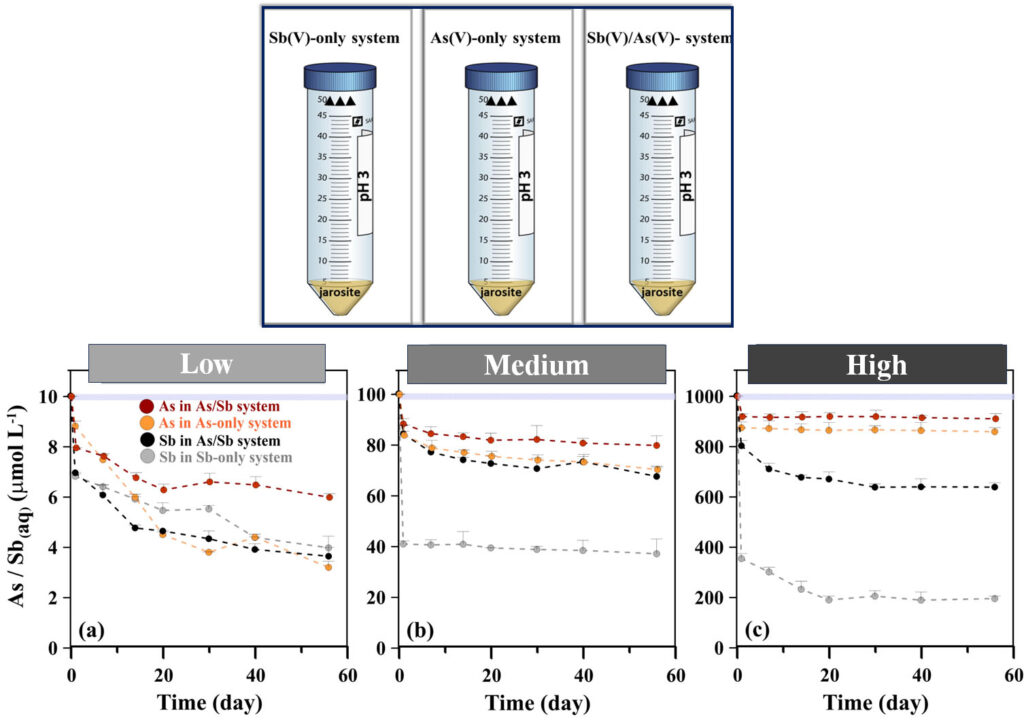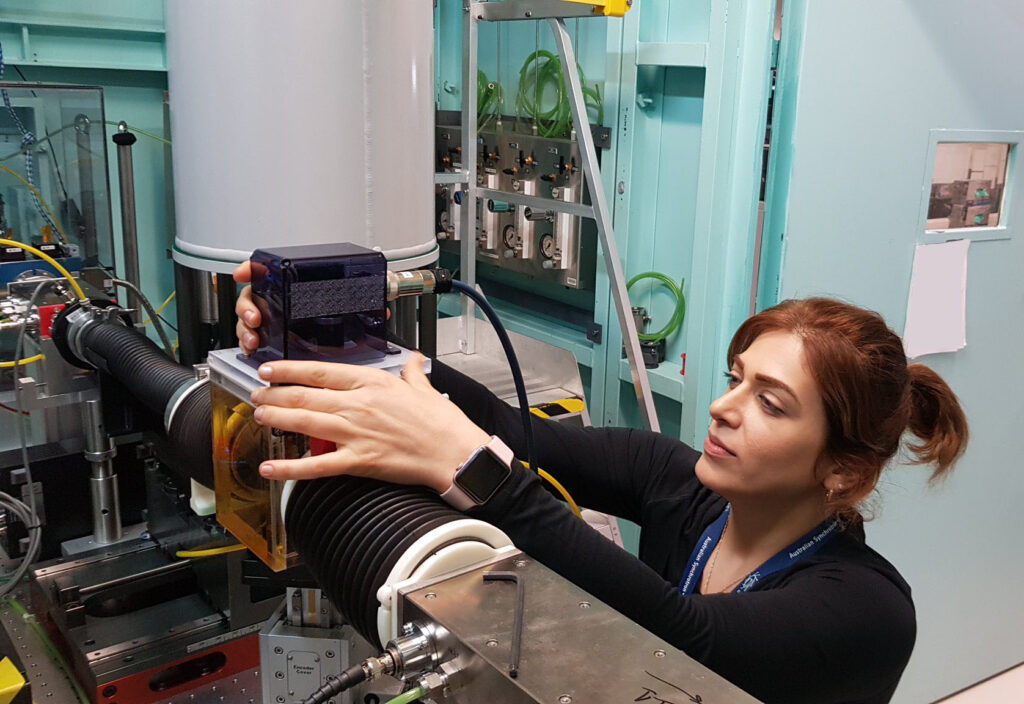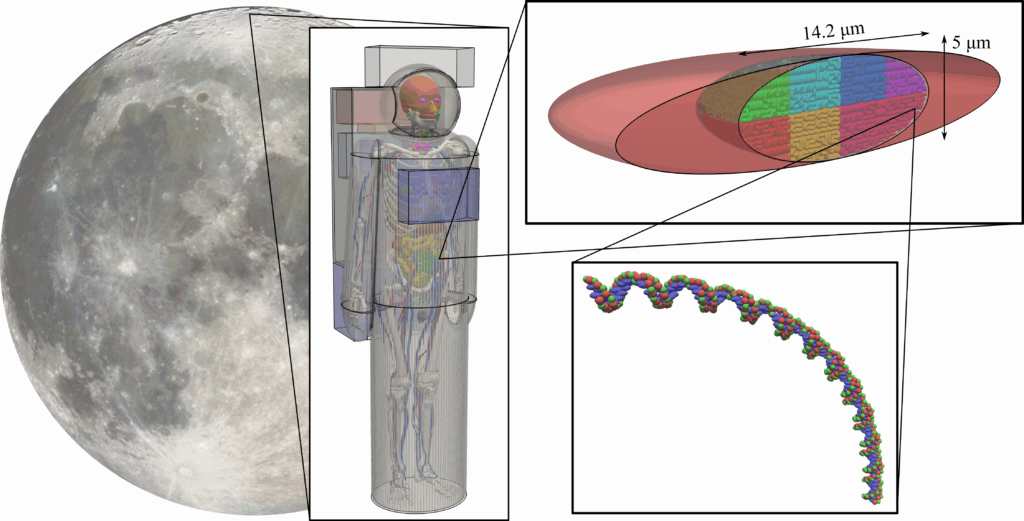Research Spotlights
By Georgia Barrington-Smith & Dr Rebecca Duncan Ensuring our ongoing food availability in the face of a rising global population is a critical challenge. Infectious plant diseases pose a significant threat to our agricultural food production, costing the global economy around $220 billion USD each year. One particularly destructive disease …
Understanding how decreasing rainfall is impacting river regions in South-Western Australia. By Georgia Barrington-Smith & Dr Rebecca Duncan Global rainfall patterns are changing, leading to dryer conditions in numerous biodiversity hotspots. Rivers in the Southern Hemisphere are particularly sensitive to these climate-induced changes. To mitigate biodiversity loss and manage our …
By Georgia Barrington-Smith & Dr Rebecca Duncan The Antarctic ice sheet holds 61% of all the fresh water on Earth. How this ice sheet is responding to climate warming remains the biggest source of uncertainty in determining future global sea levels. Interpreting clues from the past ice margins is critical …
By Rebecca Duncan & Georgia Barrington-Smith The polar food web at risk from shrinking sea ice Standing on the frozen ocean, it’s hard to imagine life thriving in such a harsh environment. Yet, on the underside of the ice lies a bustling world: a community of sea ice algae and …
Improving energy materials by understanding heat flow on the atomic scale By Georgia Barrington-Smith & Dr Rebecca Duncan With advancements in technology and increases in population leading to a looming energy crisis, it is vital to optimise energy use to meet our future needs. One of the major issues in …
By Georgia Barrington-Smith & Dr Rebecca Duncan Cancer continues to be one of the leading causes of death worldwide, claiming the lives of millions of people each year. One of the first-line treatments of cancer is chemotherapy: powerful drugs that attack cancer cells and prevent their spread. Historically, the main …
by Georgia Barrington-Smith, 31st October 2024 The Environmental History of the Great Barrier Reef, as told by a Giant Clam Shell Although archaeology has made waves on land, we know comparatively little about the history beneath our shores. A few centuries ago, the Earth experienced a Little Ice Age (LIA) …
by Georgia Barrington-Smith, 11th October 2024 How Pipelines Impact the Marine Food Web AINSE’s focus for October is Oceans Month, which we are kicking off by spotlighting Alexandra (Alex) Bastick: an Honours student from Charles Sturt University, AINSE Pathway Scholar, and emerging young voice in environmental research! With our oceans …
By Georgia Barrington-Smith
Beneath abandoned mine sites, a silent chemical threat lingers.
When sulfide-rich rocks are exposed to air and water during mining, they trigger acid mine drainage—acidic runoff that releases toxic elements like arsenic (As) and antimony (Sb) into surrounding soil and water.This contamination can persist for decades after mining operations cease, threatening the health of both people and delicate ecosystems.
Fortunately, there is a naturally occurring mineral, jarosite, which forms in these acidic, sulfur-rich environments and which may have the potential to trap arsenic and antimony by binding them to its surface. This ‘trapping’ may influence the distribution of these toxic elements. Scientists are continuing to investigate the effectiveness of this naturally occurring trap, as well as whether the presence of jarosite itself would reduce or increases the environmental risks.
Toxic Twins: Arsenic and Antimony
Arsenic (As) and antimony (Sb) are naturally occurring metalloids often found alongside metal-rich rocks in the Earth’s crust. While useful in technologies such as electronics and flame retardants, both elements become highly toxic when released into the environment at elevated concentrations.
A key process influencing their mobility and environmental impact is sorption, in which one substance can effectively sequester large quantities of these metalloids. The sorption process plays a major role in controlling whether elements like As and Sb stay bound to solid materials or leach into groundwater and soil.
While arsenic and antimony have been studied separately on iron minerals, their combined behaviour on jarosite is not yet understood.
Do these metals compete for identical binding sites, or do they facilitate each other’s attachment?
Understanding this relationship is critical for predicting how mobile, and thus how dangerous, these elements are over time.
Putting jarosite to the test: Can it trap arsenic and antimony?
A team of researchers led by Dr. Niloofar Karimian, a Mineral Resources Scientist at CSIRO, in collaboration with Monash University, Southern Cross University, and with the support of the AINSE Early Career Researcher Grant (ECRG), investigated how As and Sb bind to jarosite in mining-impacted environments.
They examined how As(V) and Sb(V) (the oxidised forms of and Sb) bind to jarosite in both single-metal and mixed-metal systems.
The team conducted lab-based sorption experiments using synthetic jarosite aqueous solutions. These solutions were exposed to As(V) and Sb(V), both individually and combined, at pH 3 to reflect the acidic conditions commonly found in mine waste environments.
Three concentrations were tested: low (10 µmol/L), medium (100 µmol/L),and high (1000 µmol/L), to assess how varying contaminant levels affected metal uptake over time. The mixtures were then agitated on orbital shakers for up to 56 days to simulate extended environmental exposure, allowing the researchers to observe both initial binding and longer-term reactions that might affect metal stability or release.

Using synchrotron spectroscopy to reveal metal behaviour
To determine precisely how the metals were binding to jarosite at the molecular level, the team used the multi-edge X-ray Absorption Spectroscopy (XAS) beamline at ANSTO’s Australian Synchrotron. This powerful technique provided insight into bonding types, chemical structure, and local atomic environments, shedding light on how securely (or loosely) the toxic metals were bonded to jarosite.

By combining long-term sorption experiments with cutting-edge synchrotron analysis, the researchers could measure both how much metal was retained and the precise mechanism by which it was bound to the mineral surface.
What was uncovered from the spectroscopy analysis?
- Jarosite binds Sb(V) more strongly than As(V)
When Niloofar and her collaborators tested As(V) and Sb(V) separately (in single-metal systems), they found that Sb(V) attached more strongly to the mineral jarosite than As(V).
However, when both metals were present (in dual-metal systems), they began to compete for the same binding sites on the jarosite surface. As a result, neither metal attached as effectively, reducing their binding capabilities by about 50%.
This competition suggests that in real-world contaminated environments, where multiple pollutants often coexist, each element can influence the other’s behaviour and mobility.
- Antimony forms new mineral-like structures
Instead of attaching to the surface of the jarosite, Sb(V) actually caused new tiny solid materials, called surface precipitates, to form on top of the jarosite. These precipitates were made up of complex clusters of Sb and oxygen (O2) atoms called polynuclear Sb oxide species.
This finding indicates that Sb(V) doesn’t passively bind to the jarosite, but instead actively changes the mineral surface, creating new solid phases that have not been seen before in this context.
This newly discovered mechanism for Sb(V) behaviour may influence our current understanding of its stability and mobility in contaminated environments.
- Arsenic binds differently depending on Sb levels
When alone, or with just a trace of Sb(V), As(V) attached directly onto jarosite. However, this behaviour changed when Sb(V) levels increased: As then shifted its attachment from jarosite to the oxide layer formed by Sb(V).
This reveals a subtle yet significant interaction, whereby rather than competing for the same binding sites, Sb(V) modifies the mineral environment, prompting As(V) to adapt accordingly.
It underscores how contaminants rarely act in isolation, instead influencing each other’s behaviour and transport in complex and unexpected ways.
These finding challenges previous assumptions by uncovering a novel mode of interaction among co-occurring pollutants, enhancing our ability to predict environmental risks and improve management strategies for contaminated sites.
A step toward better risk assessment models
Dr. Karimian’s research deepens our understanding of how toxic metals behave and co-behave in contaminated environments.
By uncovering how As and Sb interact with jarosite, this study helps:
- Predict pollutant behaviours in mining-impacted areas,
- Improve models of contaminant mobility, and
- Guide the design of better long-term remediation strategies.
While strong mineral binding can reduce short-term risks, environmental shifts, like changes in pH, may eventually destabilise these bonds, releasing toxic elements back into ecosystems.
Through a combination of cutting-edge synchrotron techniques and detailed lab-based experiments, Niloofar’s research lays the groundwork for future studies exploring how pollutants interact with minerals under real-world conditions.
AINSE is proud to support early-career researchers like Dr. Karimian through grants and programs that promote impactful science.
Explore AINSE scholarships at ainse.edu.au/scholarships and view more research features at ainse.edu.au/research.
Coming up in August: Research Spotlights – AINSE Edition!
Thank you for joining us for Geochemistry July!
Coming up in August, we’re excited to present a special edition of our Research Spotlights.
In celebration of National Science Week, we’re taking a trip down memory lane, revisiting some of our past Research Spotlights in a fun-filled week of science, every day!
Stay tuned as we reveal a daily theme across the week!
Follow ainse_ltd on Instagram, Facebook, Threads and LinkedIn to keep up to date with upcoming events and research spotlights.
By Georgia Barrington-Smith
Have you ever wondered what the main risks of space travel are?
Hollywood films like The Martian and Apollo 13 often portray the dramatic risks of space travel, such as mechanical failures, life support issues, and unpredictable space weather.
However, as astronauts journey far from home, venturing into the cold, unforgiving vacuum of space, they face a far more hostile environment, one where even the protection of their spacecraft offers only limited safety.
Beyond the thin walls of their vessel, amid the seemingly empty void, lies a hidden and invisible danger—space radiation.
This invisible threat arises from high-energy, ionising particles that travel from the Sun, distant stars, and galaxies. When these particles pass through the human body, they ionise atoms and molecules, triggering a cascade of biological damage that particularly effects our very DNA.
Galactic particles and double-strand breaks
On Earth, we are largely shielded from cosmic radiation by the combined effects of Earth’s atmosphere and magnetic field. Astronauts travelling beyond these protective barriers must contend with high-energy space radiation that can easily penetrate spacecraft, spacesuits, and human tissue, causing silent damage to the complex building blocks of our bodies — our DNA.
Double-strand breaks (DSB) – a type of early DNA damage where both strands of the double helix are broken – can be caused by exposure to radiation. Depending on the radiation field, DSBs can be extremely difficult for cells to repair correctly. If the repair process fails, it can result in mutations, cancer, or even cell death.
As we look to establish a long-term human presence beyond Earth, it’s essential to understand and mitigate the biological risks posed by prolonged exposure to space radiation. Nanodosimetry helps us to do just that.
Tracing space radiation damage at the molecular level
Space agencies worldwide, including NASA, currently estimate radiation risk using models that apply adjustments based on particle type and energy to estimate effective dose. One of the drawbacks of this method is that it doesn’t directly assess early DNA damage.
To address this shortcoming, the developing field of nanodosimetry studies radiation effects at the nanometre scale, where actual DNA damage occurs. Thanks to advances in physics, computing, and molecular biology, researchers can now simulate in-silico how individual particles interact with DNA molecules and predict the early DNA damage.
One of the key tools at the heart of this effort is Geant4-DNA—a specialised Monte Carlo simulation framework. By combining this framework with detailed three-dimensional DNA models, scientists can trace the full journey of space radiation, from its impact on the lunar surface down to the molecular havoc it wreaks inside a single cell.
Developing a framework for future lunar radiation protection
AINSE PGRA scholar Jay Archer, PhD student of the University of Wollongong, in collaboration with Swinburne University of Technology, ANSTO, and CENBG, Bordeaux, France, is pioneering efforts to improve how we monitor and understand space radiation exposure on the lunar surface.
Together, Jay and the team developed the first complete simulation pipeline to assess DNA damage from space radiation on the Moon. Their research into the effects of space radiation comprises of three key pillars:
- Monte Carlo simulations of early DNA damage from space radiation,
- Validation of these simulations through radiobiological experiments performed at the ANTARES beamline at ANSTO, and
- Characterisation of silicon radiation detectors for improved dosimetry.

1. Modelling radiation impact: from the lunar surface to DNA damage
Jay and collaborators built a multiscale simulation to track galactic cosmic radiation (GCR) and its interactions on three distinct scales: the Moon’s surface, a virtual human body model (phantom), and a detailed cell and DNA structure.
- Simulating space radiation on the Moon
First, the team modelled how GCRs hit the lunar surface and affect astronauts standing on it. This modelling helped to determine the types and intensity of radiation exposure. - Tracking radiation through the body
Using a 3D phantom, the team traced how radiation penetrates organs and tissues in the human body, calculating doses to critical biological systems. - Zooming into the DNA level
Finally, the team scaled their model down to simulate double-strand breaks in DNA—pinpointing exactly how and where radiation-induced molecular damage occurs.
Thanks to the use of this simulation pipeline from macro to nanoscale, Jay and the team obtained an understanding of the early DNA damage in astronauts without needing to conduct real-life experiments. It also allowed them to test the design of new different spacecraft shielding or spacesuit materials under different conditions, to help make safer missions for future space exploration.
2. Validating Simulations Through Radiobiological Experiments
While simulations provide valuable predictions, verifying their accuracy is essential. To this end, Jay performed radiobiological experiments using human skin cells exposed to controlled radiation beams at ANSTO’s Centre for Accelerator Science (CAS) to verify the performance of their initial simulations.
After exposure on the ANTARES beamline, Jay and team used a fluorescent marker (γ-H2AX) to stain DNA double-strand breaks and imaged the cells using a confocal microscopy. By comparing these three-dimensional visualisations with the simulated damage results from Geant4-DNA, the team were able to fine-tune their models and ensure their biological accuracy.
Below is a first qualitative comparison of the damage patterns from the simulations and the actual experimentswhich show a similar yield and structure of γ-H2AX foci.

3. Advancing tiny detectors for a giant leap in lunar safety
The final piece in Jay’s research was the development of more accurate sensors for detecting space radiation.
While current silicon devices can effectively detect many types of radiation, they struggle to detect low linear energy transfer (LET) radiation, which is a common component of galactic cosmic rays.
To overcome this weakness, Jay and his team explored low gain avalanche diodes (LGADs), which incorporate a “gain layer” that amplifies the radiation signal and improves detection sensitivity.
By testing LGADs on the SIRIUS beamline at ANSTO’s Centre for Accelerator Science, they evaluated the performance of these detectors across different particle types and energy levels, observing how radiation damage can also affects the detectors themselves over time.
The Bigger Picture: Integrating Models, Experiments, and Detectors
By integrating multiscale simulations, experimental biology, and cutting-edge detector technology, Jay has created a powerful framework for understanding and mitigating radiation risks facing astronauts in space.
His work is a stellar example of how interdisciplinary research, involving physics, biology, and engineering, can help pave the way for safer space exploration.
Jay’s work shows how science at the nanoscale can have a cosmic impact, helping protect future astronauts as they journey beyond Earth!
AINSE is proud to support researchers like Jay who are paving the way for safer, smarter space exploration.
Interested in being part of the next generation of space research? Explore our scholarships at ainse.edu.au/scholarships and dive into more research spotlights at ainse.edu.au/research-spotlights/.
That’s a wrap on our stellar spotlight for Lunar June—but don’t float away just yet!
Next up: Geochemistry July!
Follow ainse_ltd on Instagram, Facebook, Threads and LinkedIn to keep up to date with upcoming events and research spotlights.
Timeline
By Georgia Barrington-Smith & Dr Rebecca Duncan Ensuring our ongoing food availability in the face of a rising global population is a critical challenge. Infectious plant diseases pose a significant threat to our agricultural food production, costing the global economy around $220 billion USD each year. One particularly destructive disease …
Understanding how decreasing rainfall is impacting river regions in South-Western Australia. By Georgia Barrington-Smith & Dr Rebecca Duncan Global rainfall patterns are changing, leading to dryer conditions in numerous biodiversity hotspots. Rivers in the Southern Hemisphere are particularly sensitive to these climate-induced changes. To mitigate biodiversity loss and manage our …
About AINSE
The Australian Institute of Nuclear Science and Engineering (AINSE Ltd.) is an integral organisation for enhancing Australia’s and New Zealand’s capabilities in nuclear science, engineering, and related research fields by facilitating world-class research and education.
AINSE offers a range of programs and services to its members, including generous domestic and international conference support, scholarships for honours & postgraduate students and Early Career Researchers, and intensive undergraduate education schools. These benefits aim to foster scientific advancement and promote an effective collaboration between AINSE members and ANSTO.
We respectfully acknowledge the Dharawal nation as the traditional custodians of the land on which AINSE is located.
Copyright © 2019 AINSE | Powered by Astra


